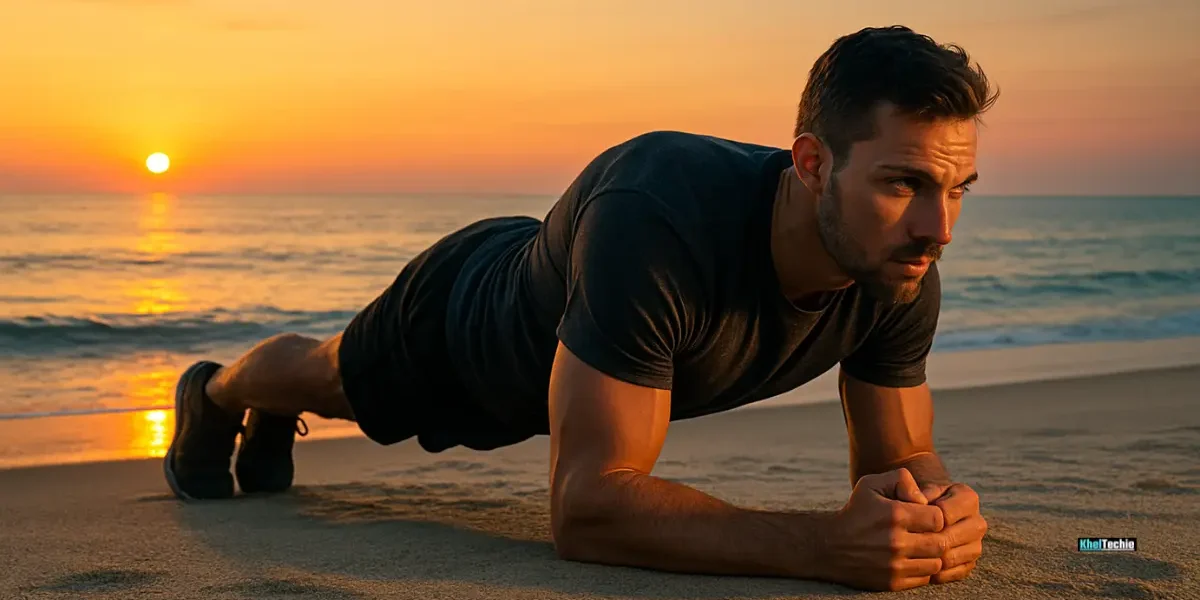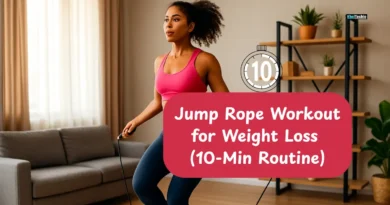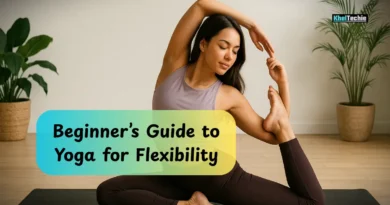Static Holds for Core Strength: Your Secret Weapon for a Rock-Solid Midsection
Are you tired of doing hundreds of crunches only to see minimal results?
You’re not alone, many people struggle to develop real, functional core strength because they focus too much on flashy movements and not enough on foundational control.
Enter static holds for core strength, a powerful, often underrated method to build a rock-solid midsection without needing any equipment. Whether you’re a beginner or an advanced athlete, mastering these techniques can transform your posture, balance, and athletic performance.
Let’s dive into why static holds matter, how to do them right, and how to avoid common mistakes that could set you back.
Also read – Strength Training for Women Over 40
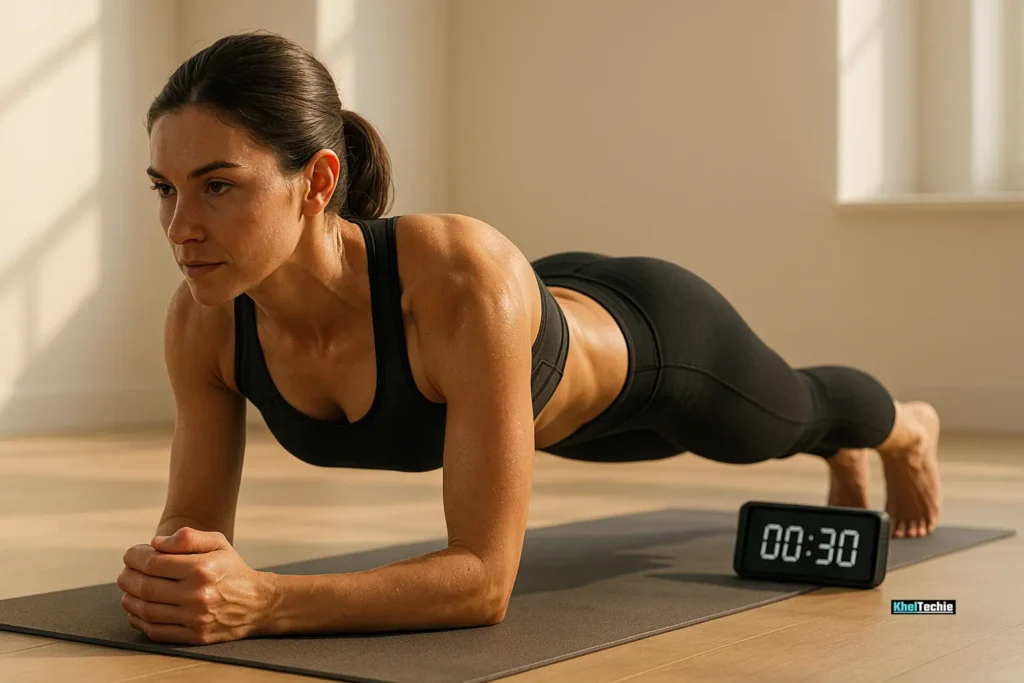
What Are Static Holds for Core Strength❓
Static holds, also known as isometric contractions, are exercises where you hold a position without moving. Think of it like pushing against a wall, your muscles work hard, but nothing actually moves.
In the context of core strength, static holds engage your abdominal muscles, obliques, transverse abdominis, and lower back, all critical for spinal stability, posture, and overall body control.
Imagine tightening your seatbelt around your waist, that’s essentially what your core does during a static hold, it creates internal tension to stabilize your spine and protect your organs.
Common Static Hold Exercises:
| Exercise | Muscles Targeted | Difficulty |
|---|---|---|
| Plank | Rectus Abdominis, Obliques, Transverse Abs, Glutes | Beginner – Intermediate |
| Side Plank | Obliques, Shoulders, Hips | Intermediate |
| Forearm Plank with Leg Lift | Core + Hip Stabilizers | Intermediate – Advanced |
| Hollow Body Hold | Entire Core, Especially Lower Abs | Advanced |

Why Static Holds for Core Strength Matter
You might wonder: why bother with static holds when there are so many dynamic ab exercises out there?
Here’s the thing: Dynamic movements (like sit-ups or Russian twists) are great for hypertrophy and endurance, but they don’t always translate to real-world stability. That’s where static holds shine.
Benefits of Static Holds:
- Improves Posture – A strong core supports your spine and keeps you upright.
- Enhances Athletic Performance – Better stability = better force transfer in sports and lifting.
- Reduces Back Pain – Weak core muscles are often linked to chronic low-back pain.
- Burns Calories – Holding a plank for even 30 seconds engages multiple muscle groups and boosts metabolism.
- Builds Functional Strength – Useful for daily tasks like carrying groceries or lifting kids.
Scientific Backing:
1). A recent article from Journée Mondiale discusses how static holds can significantly boost core strength. Dr. Lisa Chen, an exercise physiologist at the Sports Performance Institute, explains:
“When muscles remain in constant contraction during static holds, they recruit more motor units and activate more muscle fibers than traditional dynamic exercises.”
This increased muscle activation leads to noticeable improvements in core strength over a short period.
2). A study published in Scientific Reports in March 2025 examined the effects of core stability exercises on soccer players with groin pain. The findings revealed:
“A single session of core stability exercises acutely improved static and dynamic postural balance in soccer players with groin pain, with effects lasting up to 24 hours.”
This suggests that incorporating static holds into training can have immediate benefits for balance and stability.

How to Master Static Holds for Core Strength
Whether you’re brand new or looking to level up, follow this step-by-step breakdown to get the most out of your static hold training.
Step 1: Start with the Basic Plank
How to Do It:
- Lie face down with elbows under shoulders.
- Push up onto forearms and toes.
- Keep your body straight from head to heels, no sagging hips!
- Engage your core by pulling your belly button toward your spine.
- Hold for 20–30 seconds.
Don’t forget to breathe! Many people hold their breath, which reduces oxygen flow and makes the exercise harder than it needs to be.
Step 2: Add Variety with Side Planks
How to Do It:
- Lie on your side with elbow directly beneath shoulder.
- Stack feet or stagger them if needed.
- Lift hips off the ground until your body forms a straight line.
- Hold for 15–20 seconds per side.
Why It Works: This targets your obliques and hip stabilizers, improving lateral stability.
Step 3: Progress with Hollow Body Holds
How to Do It:
- Lie flat on your back.
- Lift legs and shoulders off the floor.
- Arms extended overhead or toward knees.
- Squeeze your glutes and abs tightly.
- Hold for 20–30 seconds.
Common Mistake Alert: Arching your lower back off the floor. Keep your spine pressed into the ground.
Step 4: Increase Intensity with Weighted Holds
Once you can hold a basic plank for 60+ seconds, add resistance.
Try This:
- Place a weight plate on your back while in a forearm plank.
- Use a weighted vest for added intensity.
Safety First: Make sure your form stays perfect, even a slight imbalance can cause injury.
Step 5: Track Progress & Stay Consistent
Use a simple chart to track time and progress:
| Week | Plank Time | Side Plank Time | Notes |
|---|---|---|---|
| 1 | 20 sec | 10 sec/side | Felt shaky at first |
| 2 | 30 sec | 15 sec/side | Breathing improved |
| 3 | 45 sec | 20 sec/side | Added knee tucks |

Common Mistakes to Avoid When Doing Static Holds
Even though static holds look simple, poor form can lead to injury or minimal gains.
1). Sagging Hips
The Fix: Imagine someone pulling a string from the top of your head. Keep your body straight like a board.
2). Holding Your Breath
The Fix: Breathe steadily through your nose and out your mouth. Try counting “1-2-3” with each exhale.
3). Overarching the Lower Back
The Fix: Tilt your pelvis slightly forward to flatten your lower back against the floor.
4). Rushing Too Fast
The Fix: Focus on quality over quantity. It’s better to hold for 20 seconds with perfect form than 60 with bad form.
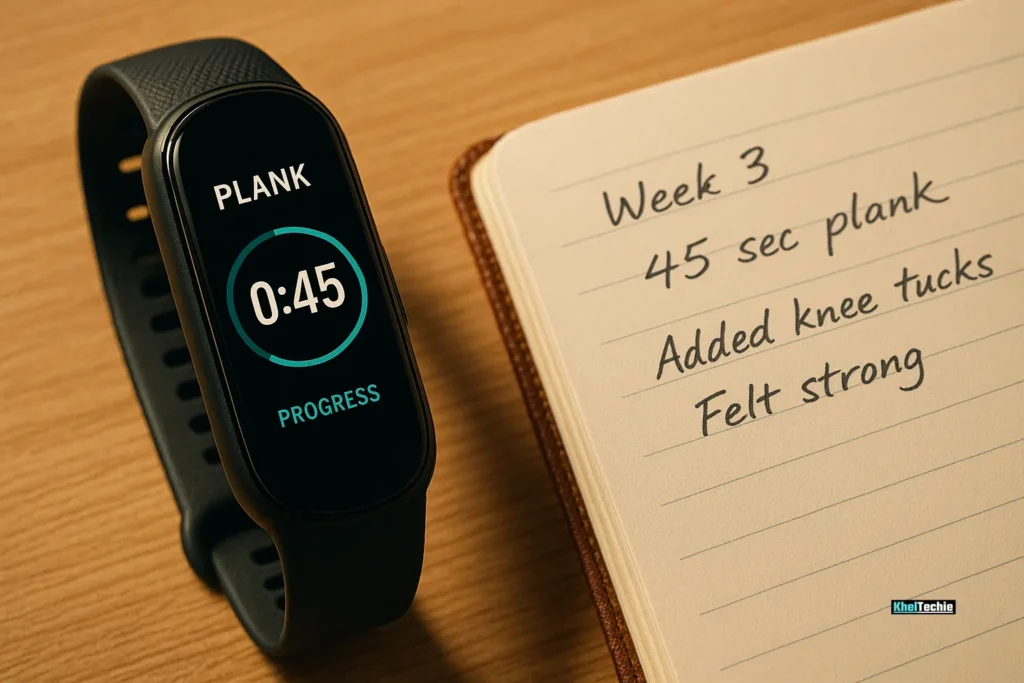
Considerations for Success with Static Holds
- Warm Up First: Dynamic stretches like cat-cows or bird-dogs prep your core for static tension.
- Cool Down Smartly: Stretch your abs, quads, and hip flexors after your session.
- Combine with Other Movements: Static holds work best when paired with squats, deadlifts, or push-ups.
- Make It Fun: Try partner planking or plank challenges to keep motivation high.
Also read – 10 Best Ab Exercises for a Flat Stomach

Conclusion: Ready to Transform Your Core?
Static holds for core strength aren’t just about looking good, they’re about feeling strong, moving better, and living healthier.
Whether you’re aiming to master the perfect plank, reduce back pain, or boost your athletic performance, incorporating static holds into your routine is a game-changer.
Now it’s your turn!
👉 Leave a comment below with your favorite static hold or share how long you can hold a plank. Let’s build a stronger community together.
And if you found this guide helpful, hit that share button and tag a friend who needs to tighten up their core!
Can also learn from the below visual guidance :-
FAQs
Are static holds good for building abs?
Yes! Static holds activate all layers of your abdominal muscles, especially the deep transverse abdominis, which helps create that tight, defined look.
How long should I hold a static core exercise?
Start with 20–30 seconds. As you get stronger, aim for 45–60 seconds. If you can go beyond a minute, consider adding difficulty (e.g., leg lifts or weights).
Can static holds help with fat loss?
While static holds aren’t cardio, they increase muscle engagement, which boosts metabolism. Combine them with cardio and diet for best results.
What is the hardest static core hold?
The hollow body hold and the L-sit hold are two of the most challenging due to the full-body tension required.
Can I do static holds every day?
Yes, but listen to your body. If your core feels overly sore, take a rest day. Recovery is key for growth.
Do static holds help with posture?
Absolutely. A strong core supports your spine and helps maintain proper alignment, reducing slouching and fatigue.
Are static holds safe for people with back pain?
They can be, but consult a physiotherapist first. Done correctly, planks can actually reduce back pain by strengthening stabilizing muscles.
What’s the difference between static and dynamic core exercises?
Static holds build endurance and stability, while dynamic exercises (like mountain climbers or sit-ups) build power and mobility.
How do I know if I’m doing a static hold correctly?
If you feel tension in your abs, glutes, and lower back—and your body remains rigid—you’re likely doing it right. If your neck or lower back hurts, adjust your form.
What equipment do I need for static holds?
None! They’re completely bodyweight-based. However, a yoga mat can make the workout more comfortable.

